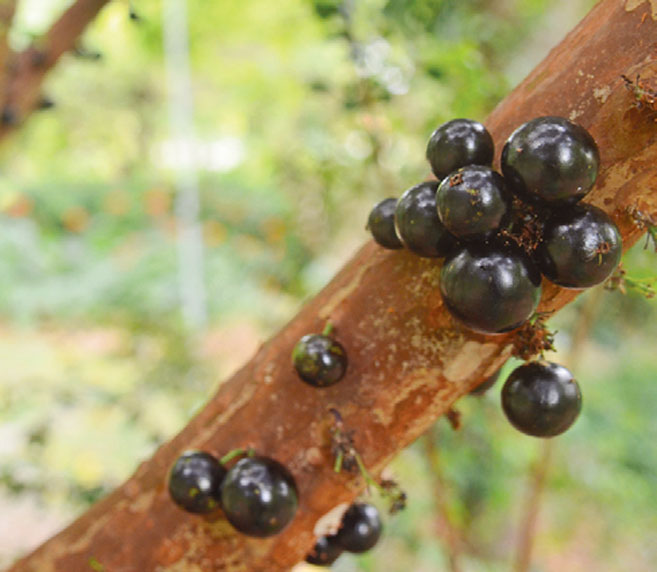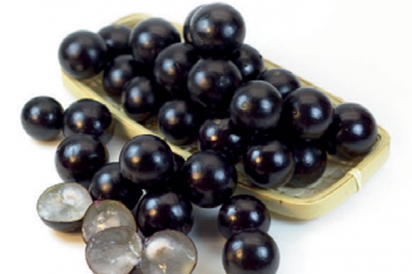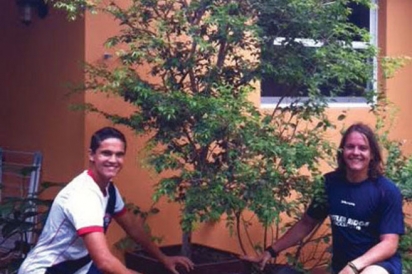The Brazilians Are Coming!
There’s an invasion taking place in South Florida and it’s going to be delicious. You can see it on the street, read about it in the newspaper and taste it in the restaurants: the Jaboticaba.
Brazilians are buying homes and planting trees, literally putting down roots in our communities. Some estimates say there are as many as 200,000 Brazilians in South Florida and 300,000 in the state. We are accustomed to these invasions, of course, so we will learn Portuguese, intermingle and become a community. We will adapt our edible communities, and as before we will incorporate not only the people, but also the flavors and tastes of their homeland.
This invasion means tropical fruit and more tropical fruit. Brazilians have a close connection with fruit. They are world leaders in growing and consuming bananas, pineapple, calabaza, guava and papaya. They also have a propensity for the exotic: cupuaçu, açaí, biribá and so much more. My own household was conquered long ago by Brazil, so I was ready. I have the trees, the fruit, the vegetables. At times this is easier said than done – we are, of course, different in culture and climate from Brazil. It’s generally colder, and our soils could not be any more different. It can and will be a frustrating reality to many Brazilians and Americans alike looking to take advantage of this modern-day invasion. The horticultural adaption begins now!
BEM-VINDA JABOTICABA
One fruit that most Brazilians adore is the jaboticaba. This little grapelike fruit, native to the south of Brazil, touches a special place in their hearts, so much so it can be a bit baffling. It is a small tree, productive and stunning in fruit. The fruit wrap tightly to the multiple mottled trunks of the tree. In south central Brazil, the jaboticaba is a sensation, consumed fresh, made into jellies, liqueurs and preserves. Brazilians claim it as their own – even those who live thousands of miles away and do not have access to the tree. Even the children of Brazil are born with jaboticaba eyes.
In Brazil, most soils are acid in nature and are well suited for jaboticaba. Here in South Florida we have both acid and calcareous soils, and this is where it gets tricky. If you live in Broward County and to the north, the jaboticaba will generally grow well. But, in Miami-Dade, it’s much more complicated and the only way to grow a jaboticaba well is to amend the soil or to grow it in a container with a good neutral to acidic soil. A big fan of saving my time and effort, I like to grow jaboticaba in a container on my porch. You can control the soil and the water and make a “working” tree for the home tree garden. You have to stay focused, keep things watered and be little patient – or, in my case, you can rely on your half- Brazilian children to care for the tree.
KEEP IN A CONTAINER
Our jaboticaba grows in a large container that allows sufficient room for the root system to expand and for more flexibility in watering. We grow our tree in pure coconut coir, a light but absorbent material on the neutral to acid side. We add enough nutrition to keep the jaboticaba growing, but not too much to be a problem with burn – in a container, you must take care with fertilizer burn. We water exclusively with our rain barrel. It will be a test of your resolve relying completely on the rain barrel, but the results tell the tale. Our rain water is on the acidic side of neutral and, when combined with the coconut coir, the jaboticaba is at home – or at least nearly so.
Under these conditions, the jaboticaba will grow quickly, and if you’re living right, fruiting may occur in the fourth year. Water frequently, for the jaboticaba is adapted to flooding and will wilt and suffer with water stress. If given good water, however, the jaboticaba will soon begin to produce its small, white flowers, clinging tightly to the multiple trunks. Once you have some production, invite over a few Brazilians and watch the fun. Dive in with both feet. Eat the skins and even the seeds as many Brazilians do. Let loose, put on the samba, eat your jaboticaba and enjoy.
{ Jaboticaba Jamboree }
One good place to seejaboticaba (Myrciaria cauliflora) and othertropical fruits is atthe Redland Summer Fruit Festival June 20 and 21 at Fruit and Spice Park (fruitandspicepark.org). You can often findjaboticaba in local farmers markets and farmstands from Three Sisters Farm, Pinecrest Farmers Market and Southwest Community Farmers Market. Buy trees at Pine island Nursery (tropicalfruitnursery.com) and Richard Lyons Nursery (richardlyonsnursery.com).
Rich in vitamin C and antioxidants, jaboticaba have a thick skin and whitish pulp with small seeds. Store in plastic bags or freeze to eat later.
JABOTICABA CAIPIRINHA
• One handful jaboticaba, cut in half
• Sugar
• Ice
• Cachaça
For each drink, place fruits in a glass and add sugar. Mash gently. Add ice and cachaça and stir.







